The most precise measurements of the universe’s composition and growth have been reported in almost thirty new papers based on Dark Energy Survey observations of 229 million galaxies and covering one-eighth of the sky. Plus, stories from the first day of the AAS conference, all the volcanoes, and mission updates.
Media
Transcript
Hello and welcome to the Daily Space. I am your host Dr. Pamela Gay.
And I am here to put science in your brain.
Each hemisphere of the Earth has that one giant star that just might explode as a supernova. Over the past year or so, we’ve talked about our northern hemisphere giant a lot: that’s Betelgeuse, the red shoulder star of Orion that became markedly fainter in late 2019. Now, the southern hemisphere supernova hopeful is in the news because it is threatening to drown out the light of its nebula.
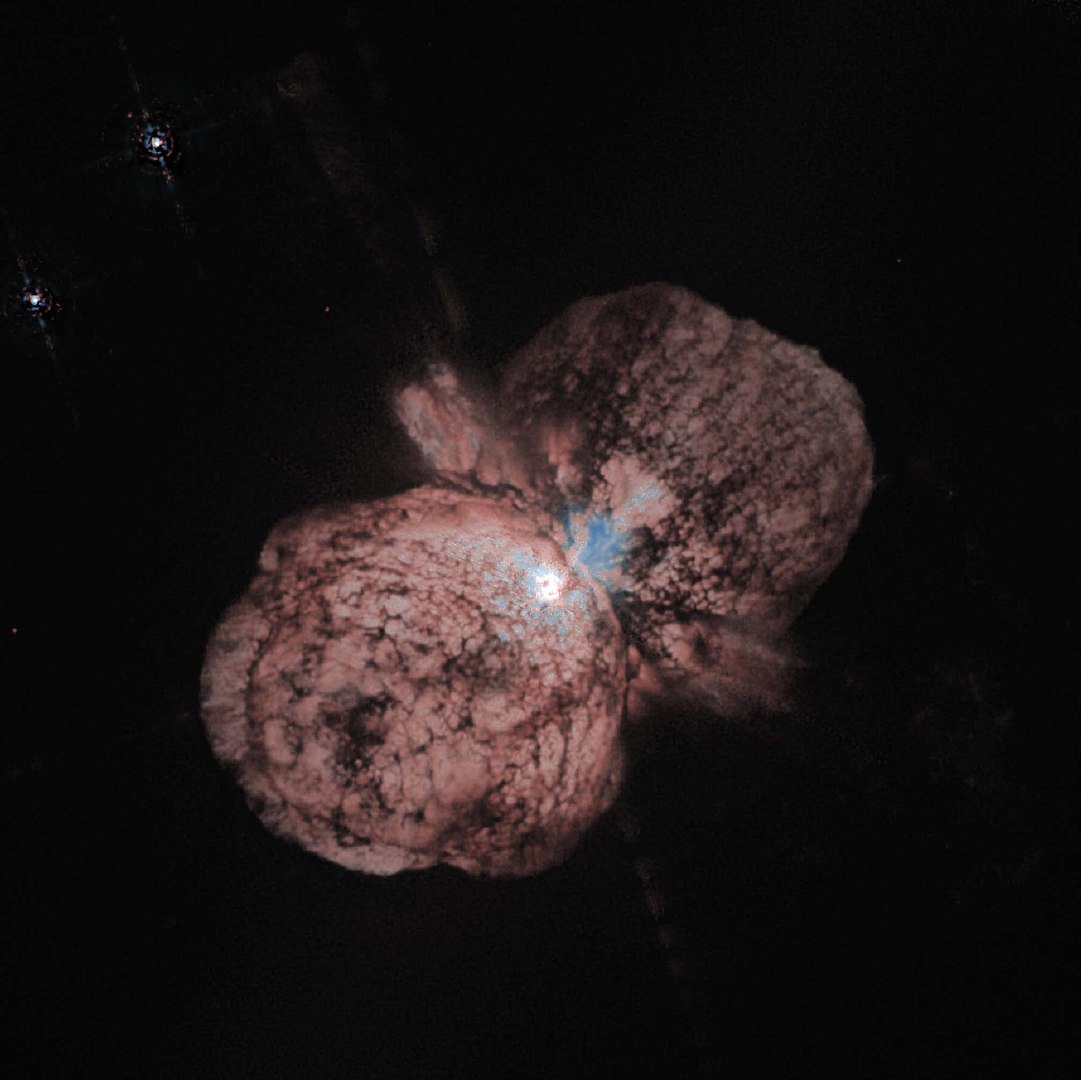
This star, Eta Carinae, got its name from being one of the brighter stars in its constellation, but it was far from the brightest, at least until 1827 when it suddenly grew in brightness until in March 1843 it became the brightest star in the southern hemisphere and the second brightest star in the entire sky. It is believed that during this event, Eta Carinae expelled much of its atmosphere into what is now called the Homunculus Nebula.
Following all the excitement, Eta Carinae faded from view for decades before a slow rebrightening started in the early 1900s. Ever since Eta Carinae has been continuing to brighten, and today it is back to being a fairly bright star. Or should I say stars? While a single giant star is responsible for the behaviors we’re seeing, this star is likely aided and abetted by a companion star that both shapes the Homunculus Nebula and interacts with the giant star’s wind.
These two stars orbit every 5.5 years and the highly elliptical nature of this orbit means they dance together and apart over this time. Until recently, when the stars came together, mass transfer from the massive star to the companion led to the system shining in extreme ultraviolet. That is until recently, which seems to indicate that the star is no longer passing along its mass the way it used to.
During both the 2014 and 2020 close passages, no extreme ultraviolet light was seen, and this seems to indicate that the massive star has settled into a less sharing phase; instead of blasting out its material, it has more normal stellar winds and is hanging out getting brighter and brighter over time. If this new behavior persists, Eta Carinae will get bright enough that its light will make it difficult to image the surrounding nebula, but this will only happen if this behavior continues.
This work was presented by Kris Davidson at this week’s virtual American Astronomical Society meeting. Kris points out, with a distance of 7500 light-years, Eta Carinae is the only massive star of this type that is close enough to study in detail, and for all we know, this star has already gone supernova, and now we’re just waiting for the light from that explosion to reach us here at Earth.
The word nebula gets used for a lot of different systems with a lot of different formation histories and future behaviors. From the nebulae that surround dying stars, we now jump to the glowing gases that form new stars.

The SOFIA airborne observatory recently turned its infrared detectors toward a nebula cataloged as RCW120. While its name is ugly, this horse show of glowing gas has a ghostly beauty. Only 150,000 years ago, this was just a dark cloud, but one day something happened that started star formation. Those first stars lit up, and their winds pushed out against surrounding gas, triggering it to collapse and form stars which then lit up and continued this process in a stellar feedback loop.
Today, this nebula is expanding at 15 km/s as stellar winds push out, and new rings of stars are triggered to form. This kind of formation hasn’t been seen before, and according to the study lead author: The nebula is giving us a window into what star formation may have been like in the early universe. We can’t go back to study the early universe, so we depend on observations like these to understand how the universe transformed from the Big Bang to the universe we see today.
This work appears in Science Advances, and we will link to a high-resolution image of this system on our website, DailySpace.org.
Today we’re just going to bounce back and forth between stellar life and death, and death seems to be the side of the cycle of star life I keep landing on, but this time, instead of explosive death, we are looking at the calmer passing of stars like our Sun.
These mass objects eventually run out of the kinds of nuclear fuel that can fuel their fusion, and when this happens, they expand radically and then exhale their outer atmosphere. Their stellar cores remain behind as small, hot, white dwarf stars. This transition, while not explosive, is still traumatic to any surrounding planets, which may get consumed into the star or at least baked and blasted by stellar winds. By the time the star is dead, the planets may be shattered into dusty debris.
When we look at the youngest white dwarf stars, however, we don’t see debris disks. In new research by Jordan Steckloff, which appears in The Astrophysical Journal Letters, it is shown that the extreme heat of young white dwarfs actually blasts dust apart, preventing the formation of a debris disk. It is only after the dead star has cooled a bit that a disk can form. Sadly, there just isn’t enough surviving stuff in that disk for the destroyed planets to re-mix into new worlds.
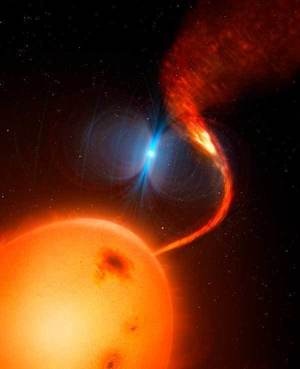
We are amused to report that, for the second time, a star has been observed to twirl away incoming gas instead of allowing it to form a nice disk. When white dwarfs form in binary systems, they gravitationally steal material from their companions. Normally that material flows between the stars, but in the case of binary system J0240, researcher Peter Garnavich finds the young, fast-rotating white dwarf is spinning so fast and has such a strong magnetic field that the infalling material is just flung away like it is hitting fan blades. Since this is only the second known example of this, it’s not well understood. But it is cool. When we know more, we’ll bring it to you here on the Daily Space.
From the births and deaths of stars, we come back to Earth to look at volcanoes. It seems like we’ve had an uptick in volcanic activity based on all the news reports of late, but in reality, everything is proceeding at a normal pace. While there have been some new eruptions in the past few months, other eruptions are slowing down or ceasing altogether.
Take Kīlauea in Hawai’i. This very active and extremely hazardous volcano had been erupting continuously from 1983 through 2018, and during that time, deposited about 4.4 cubic kilometers of lava, destroyed numerous homes and roads, and added 439 acres of new land to the island. Then, in 2018, after a massive eruption of new fissures on the eastern flank of the volcano, the Pu‘u‘ō‘ō lava lake collapsed, and the volcano quieted… until this past December. At that point, the Halema‘uma‘u lava lake at the summit had refilled and began to erupt again. Now, that activity has also ceased, and the USGS has lowered the Volcano Alert Level from watch to advisory. Halema‘uma‘u no longer has any visible lava in the crater. It’s still hazardous and prone to eruption, so please follow all warnings if you do visit the park.
Kīlauea is a fairly easy to manage volcano. The eruptions are steady and slow, and you can get out of the way. That’s not always the case, especially with stratovolcanoes — those huge peaks like Mt. Fuji in Japan or Mt. Saint Helens in the United States or just about any Andean volcano. And when those volcanoes erupt, they can disrupt everything, including air travel. Such is the case with the eruption just before we went on break of Great Sitkin in Alaska.
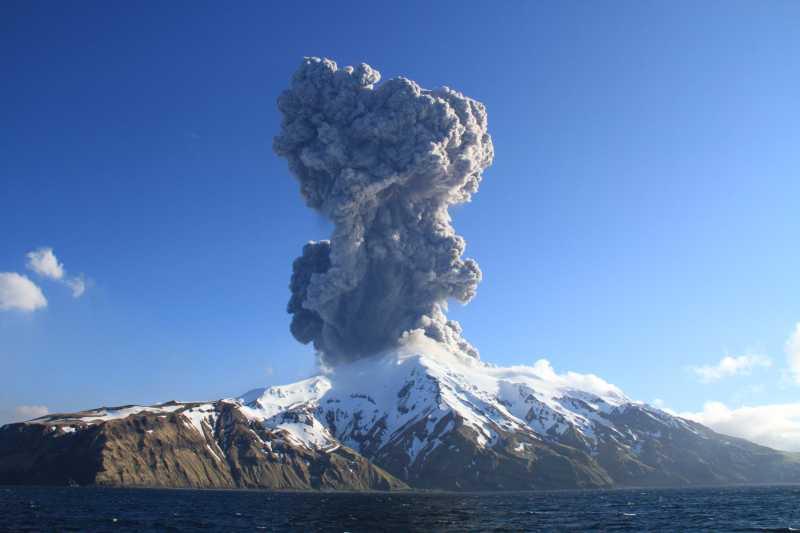
This volcano explosively sent an ash cloud 4.5 kilometers into the air, and that led to the Alaska Volcano Observatory issuing an alert for aircraft to avoid the area. The fine particles of ash that volcanoes send up into the air are very rough and jagged and can destroy an airplane engine by basically eroding turbine blades and scratching landing lights and other gear, as well as blocking fuel nozzles and air filters. It’s not fun stuff to fly through, and while the eruption may only have lasted one to two minutes, it sent up enough ash to create an immediate hazard in the airspace above. Once the winds picked up the ash, and much of it settled back down on the volcano, the hazard dissipated. This was the first eruption of Great Sitkin since 1974. Welcome to the 21st century, volcano!
Speaking of 21st-century volcanoes, we have been covering the ongoing eruption on Iceland’s Reykjanes Peninsula since before it started, and we could do that thanks to the scientific efforts of the Icelandic Meteorological Office. The team there has been tracking the magma that led to this most recent eruption since December 2019, when a series of seismic swarms began. They managed to follow the magma by monitoring ground deformation and tracked five different intrusions as they worked their way around the region.
Then, in February, a magnitude 5.7 earthquake occurred followed by another swarm of more than 50,000 quakes, which we reported on at the time. This swarm helped the scientists at the Met Office find a corridor of magma that flowed underground for about three weeks. The quakes continued to help define the edges of the chamber. And then, all the quakes and deformation dropped suddenly. Within a few days, the current eruption, that we are all enjoying watching via webcam, began. Since that point, the Icelandic Meteorological Office has been helping the Icelandic government monitor the eruption area and keep people safe, despite all the videos, volleyball, and general shenanigans going on at the site.
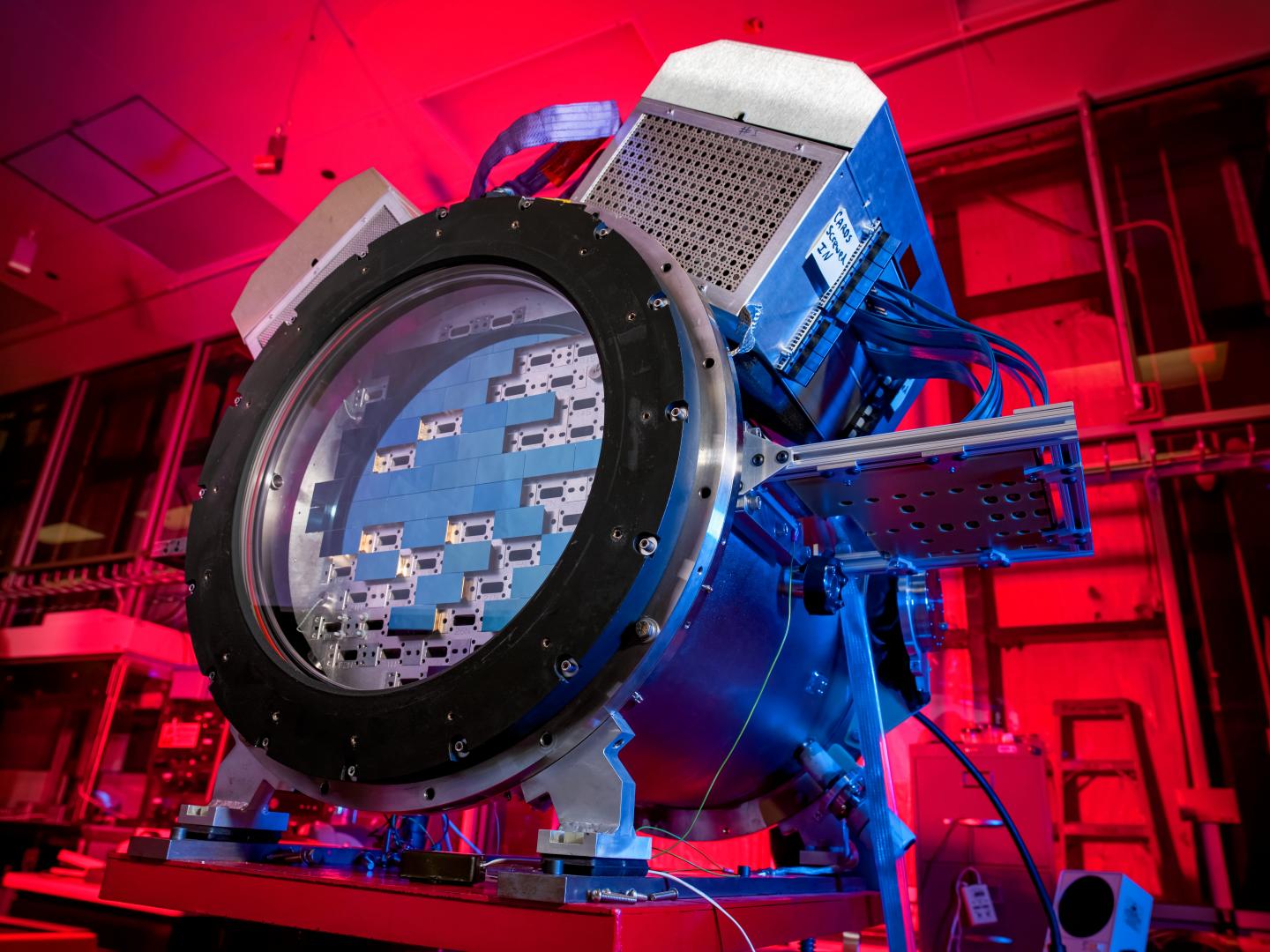
From nice friendly volcanoes — by which I mean deadly liquid mounds of moving rock — we now jump back out to the farther corners of the universe and look at the vast number of the galaxies between here and there. The Dark Energy Survey has released 29 new scientific papers from their collaboration of 400 scientists spread across 25 institutions in seven countries. This mound of papers looks at the distribution of 226 million galaxies, their morphologies, and the structures they combine to form throughout a seven billion light-year deep cone of the universe.
To be honest, with this many papers by this many authors, I’m not sure there is a galaxy-focused researcher who isn’t either on one of these papers or reviewed one of these papers.
Over the seven billion years observed in this survey, the distribution of galaxies became more and more clustered, with the degree of clustering reflecting the amount of dark matter present. By combining this galaxy data with Planck’s data on the clumpiness of material emitting the cosmic microwave background, they are able to see how our universe’s structure has evolved. Comparison of data with models indicates our standard model of how the universe is evolving does a pretty good job reflecting reality, but reality is, on average, a little less clumpy than predicted.
Why? No idea. These publications only look at one-sixteenth of the entire sky. The Dark Energy Survey has twice again as much data that they are still processing, and it will be interesting to see if this slight lack of clumpiness is seen in the additional data.
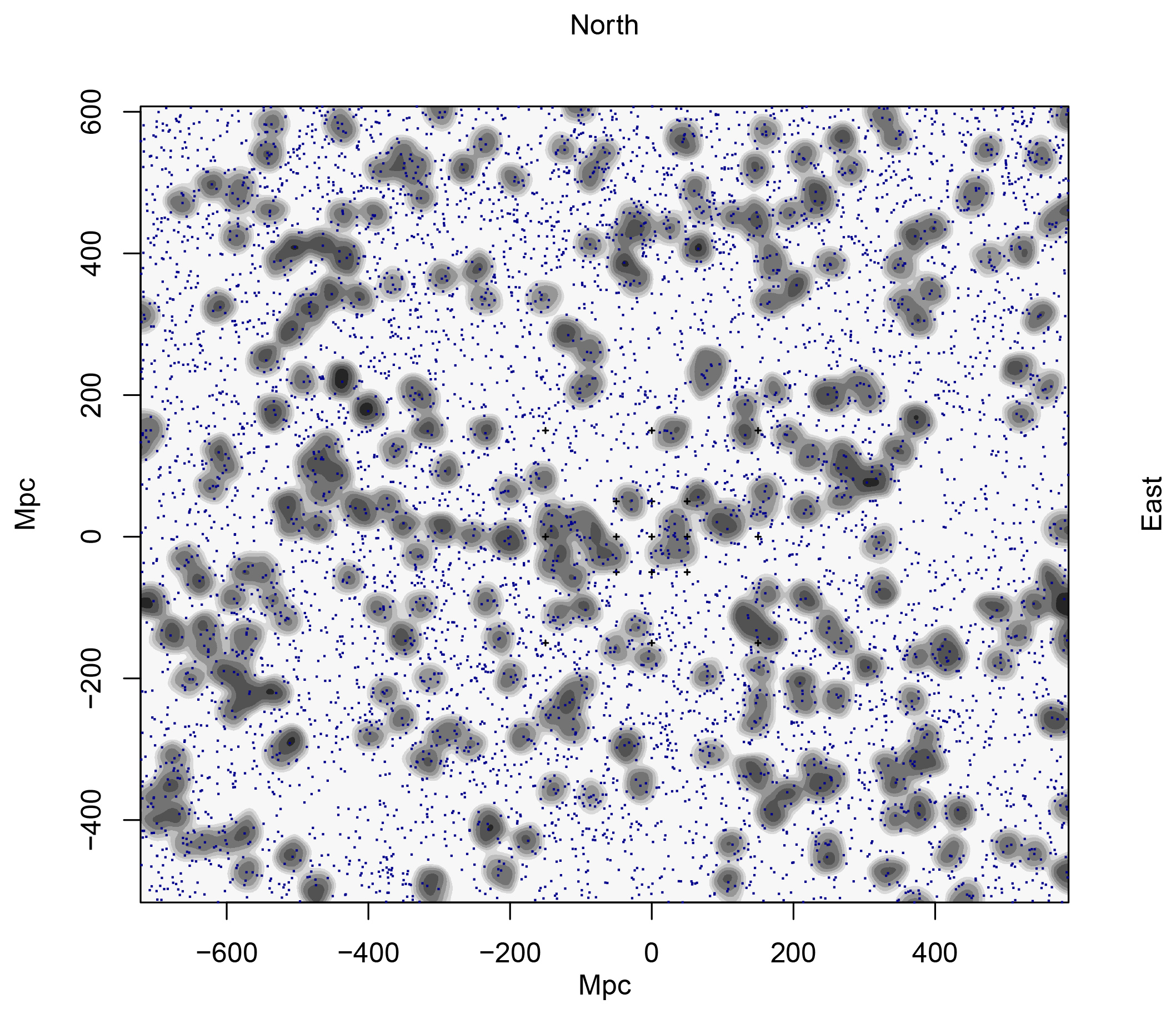
Part of what makes me so curious about what’s in that additional data is the discovery of a massive arch of galaxies spotted by graduate student Alexia Lopez. There is more than one way to spot a galaxy; while it’s great to see them in their round, spiral, or lumpy beauty, sometimes they are just too faint to really see. To find those half-hidden systems, Lopez looked at the light of extremely distant quasars to see if intervening galaxies absorbed some of the light.
Galaxies commonly have clouds of magnesium, and that gas can get excited and absorb light, creating precisely spaced dark bands saying, “There is magnesium-II here.” The color at which that pattern of dark lines appears identifies the distance to these otherwise invisible galaxies. In this way, one set of dark lines at a time in quasar after quasar, Lopez mapped galaxies, and she found a super weird arc that is huge and not supposed to be there according to the Cosmological Principle.
This Arc is one-fifteenth the radius of the observable universe. It is the single largest structure known, and it tells us that our ideas for how big an average chunk of the universe must be just got bigger.
Putting these two stories together: the Dark Energy Survey found less structure and Lopez and her team found too much. This is consistent with the lumpiness not being what we thought and means we need so much more data to see if there are more arcs and more non-lumpy masses waiting to redefine the average scale size of the universe.
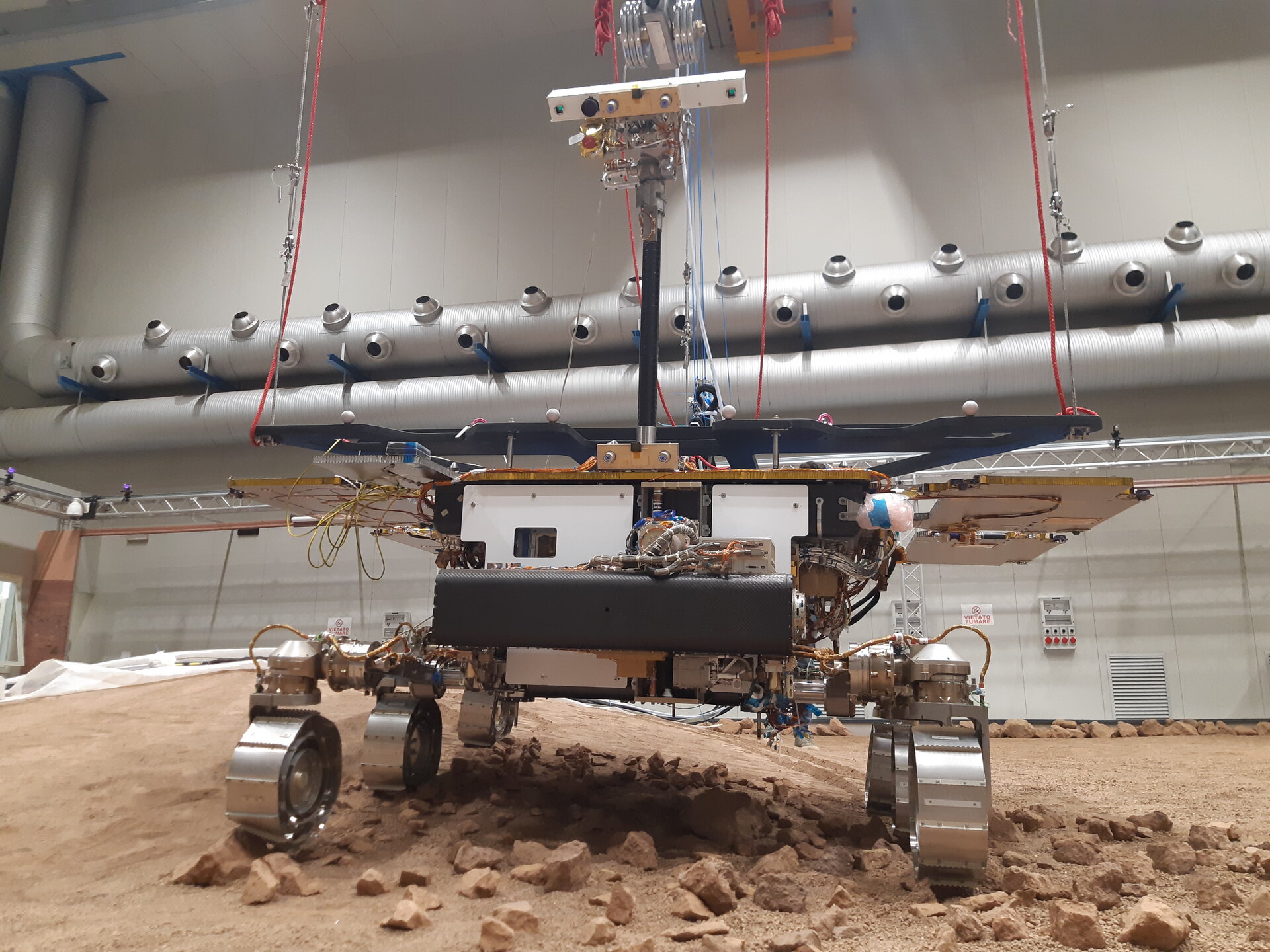
And now for a quick rundown of upcoming and ongoing missions. Yes, Beth is making me talk about something that hasn’t launched as well as things that have. So first up, ExoMars is the European Space Agency’s upcoming Mars rover, named Rosalind Franklin, that is set to launch in 2022. Last week, the rover’s Earth-bound twin did some simulated terrain tests, including a side slope, a small hill, and some boulder-covered terrain. The rover also took a panoramic image from the top of a simulated hill, and we’ll have a link to that image and others from the tests on DailySpace.org.
Next up, InSight is once again proving to be the little lander that could. Despite all its challenges, the team behind this lander continues to find ingenious and unexpected ways to try and fix problems.
Mars has a lot of dust, and that dust tends to collect on things like solar panels. Solar panels, of course, are necessary to power things like tiny rovers and big landers, so when they get covered, battery levels don’t replenish as well as they should and power levels fall. We saw with Opportunity that this can be a mission-ending problem, so the InSight team has been working to find a solution. And what they did greatly amuses us — they used that amazing little shovel to pour Martian dirt on the solar panels to remove some of the dust. And it worked, with the lander gaining 30 watt-hours of energy per Martian day. This boost in the power reserves should help InSight keep its instruments on for a few extra days before the team shuts down instruments to reserve energy during Mars’ aphelion, or farthest point from the Sun.
Now, just in case you missed our watch party last week, NASA announced the selection of their Discovery missions for the year, and in a shocking twist, of the four possible finalist missions, they chose both of the missions to Venus. The first is DAVINCI+, which will study the composition of Venus’ atmosphere. The second is VERITAS, and that mission will map the surface of Venus and study the geologic history of the planet. We’re excited to say that the Planetary Science Institute has scientists involved in both missions, and we hope to have them on the show this week to discuss their missions and share their excitement.

Last but definitely not least, NASA’s Juno spacecraft was set to get a close look at Jupiter’s moon Ganymede this week. This will be the first fly-by of the giant moon in more than twenty years. The flyby was scheduled for Monday, June 7, at 1:30 pm Eastern, and it would bring Juno within about 1000 kilometers of Ganymede. Beth is extremely excited about the results of this flyby since this huge moon is actually bigger than Mercury and has its own magnetosphere. There may even be a subsurface ocean involved.
The craft will be using an ultraviolet spectrograph, an infrared mapper, and a microwave radiometer to gather data during the approach. Additionally, the JunoCam imager will take pictures, and we will share those images and results with you as soon as they are released, so make sure you stay tuned over the coming weeks.
For now, though, this has been the Daily Space.
Learn More
Eta Carinae’s Light Drowns Its Nebula
Ghostly Young Nebula Catches Star Formation
- USRA press release
- “Stellar feedback and triggered star formation in the prototypical bubble RCW 120,” Matteo Luisi et al., 2021 April 9, Science Advances
Light Delays Disk Formation in White Dwarf Systems
- PSI press release
- “How Sublimation Delays the Onset of Dusty Debris Disk Formation around White Dwarf Stars,” Jordan K. Steckloff et al., 2021 June 2, The Astrophysical Journal Letters
Star’s Magnetic Field Twirls Gas
- Notre Dame press release
- “Confirmation of a Second Propeller: A High-Inclination Twin of AE~Aquarii,” Peter Garnavich et al., submitted to The Astrophysical Journal (preprint on arxiv.org)
Volcano Updates: Kīlauea, Great Sitkin, and Iceland
- Hawaii’s Kilauea Volcano Stops Erupting After Months of Lava (Geology In)
- Alaska Volcano Eruption at Great Sitkin Island Sparks Red Warning (Geology In)
- Chasing Magma Around Iceland’s Reykjanes Peninsula (Eos)
Massive Survey Confirms Ideas on Universe’s Evolution
- NOIRLab press release
- Fermilab press release
- “Dark Energy Survey Year 3 Results: Photometric Data Set for Cosmology,” I. Sevilla-Noarbe et al., 2021 May 17, The Astrophysical Journal Supplement
An Arc of Galaxies Defies Easy Explanation
- UCLAN press release
Mission Updates: ExoMars, InSight, Venus, and Juno
- ExoMars rover twin begins Earth-based mission in ‘Mars Terrain Simulator’ (ESA)
- NASA’s InSight Mars Lander Gets a Power Boost (NASA JPL)
- NASA Selects 2 Missions to Study ‘Lost Habitable’ World of Venus (NASA)
- NASA’s Juno to Get a Close Look at Jupiter’s Moon Ganymede (NASA JPL)
Credits
Written by Pamela Gay and Beth Johnson
Hosted by Pamela Gay
Audio and Video Editing by Ally Pelphrey
Content Editing by Beth Johnson
Intro and Outro music by Kevin MacLeod, https://incompetech.com/music/


 We record most shows live, on Twitch. Follow us today to get alerts when we go live.
We record most shows live, on Twitch. Follow us today to get alerts when we go live.